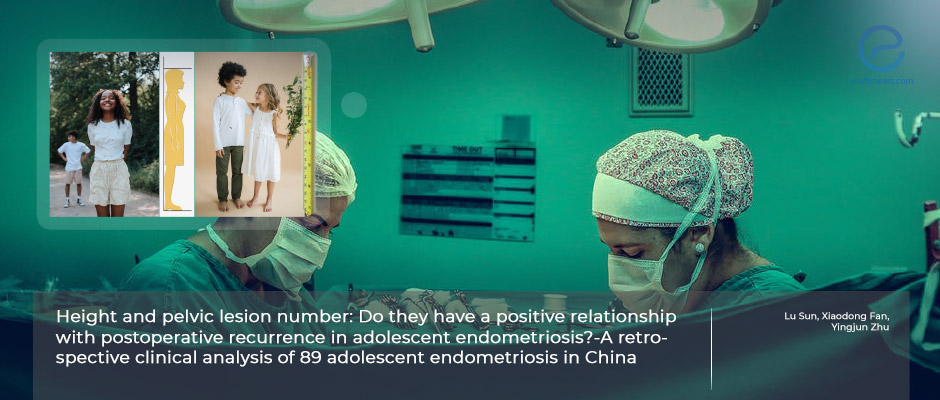Taller Girls More Likely to Have Recurring Endometriosis
Oct 24, 2022
Taller endometriosis patients with multiple lesions have a higher risk of endometriosis recurrence after surgery, at least in Chinese people.
Key Points
Highlights:
- Adolescents who are taller and have at least three endometriotic lesions are more likely to have recurring endometriosis after surgery.
Importance:
- This finding can guide the postoperative treatment of adolescent patients.
What's done here:
- Researchers from China analyzed 89 patients with endometriosis over seven years.
- The clinical manifestation, clinical stage, and risk factors of endometriosis recurrence following the surgery were investigated.
Key results:
- The cumulative incidence rate of endometriosis recurrence following the operation: 13.2% (after 1y.), 15.09% (after 2y), 16.98% (after 3y), and 20.75% (after 4 and 5y).
- Disease stage, lesion number, and patient height were factors associated with the risk of recurrence following endometriosis surgery.
- Lesion number and patient height were independent risk factors.
Limitations:
- This was a single-center study conducted in a group of patients from one ethnic background. These findings may not apply to all adolescents with endometriosis
Lay Summary
Adolescents who are taller and have three or more lesions are at a higher risk of endometriosis recurrence following surgery, according to a new study by Chinese researchers published in the Journal of Obstetrics and Gynaecology. They should, therefore, be given more attention, according to the authors of the study. “This finding can guide the postoperative treatment of adolescent patients with endometrioma,” they wrote.
In order to explore the clinical manifestation, clinical stage, and risk factors of endometriosis recurrence following surgery, a team of researchers from The Department of Gynecology, Tianjin Central Hospital of Gynecology Obstetrics in China led by Dr. Yingjun Zhu reviewed the cases of 89 adolescents with endometriosis over seven years.
The team found that the cumulative incidence rate of disease recurrence following the operation was 13.2% after one year, 15.09% after two years, 16.98% after three years, and 20.75% after four and five years.
The researchers identified risk factors associated with the recurrence of the disease after surgery as the stage of the disease, number of lesions, and height of the patient. Statistical analyses revealed that the presence of three or more lesions and the height of the patient were independent risk factors associated with the recurrence of the disease following surgery.
Adolescent endometriosis is especially difficult to diagnose because it is different from the disease seen in adults. Diagnosis is therefore often delayed causing unnecessary suffering.
Research Source: https://pubmed.ncbi.nlm.nih.gov/35915553/
adolescent endometriosis risk factors recurrence stage height tall multiple number suffer

